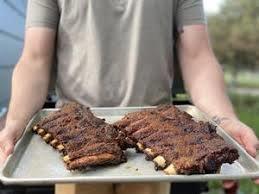
Back in 1880, Native people ate buffalo meat with great relish, seasoned or not, whether cooked over a campfire or on a grill. Just as we do today. Photo Nebraska Bison.
“The meat that has ‘ping’ to it—the meat that satisfies.”
That is how Lakota hunters from the Cheyenne River Sioux tribe described the taste of buffalo to the missionary Thomas Riggs on the way to their last winter hunt in December of 1880.
For 15 years buffalo had been gone from their Great Sioux Reservation, due to settlement pressures from the east, but mysteriously they had returned and the older hunters were eager to taste their favorite meat again.
Snow fell almost continuously and the hunting party of 101—about half men and half women and children—followed the Moreau River valley west with buckboard wagons and extra pack horses. Some days they made only three or four miles in deep snow that crusted and grew deeper day by day.
The hunters grew excited that last day as they neared the Slim Buttes, where scouts told them the buffalo had returned.
They talked of how tired they were of eating porcupine, skunk, venison and badger meat. During their journey the party had killed and eaten 148 porcupines and 200 deer.
The Lakota also had brought 500 dogs as back-up if needed—but mostly to fatten up for later.
Then, on the day before Christmas, they made their first local buffalo hunt in 15 years.
The men returned to camp loaded with an abundance of meat and robes. The women helped unload and cared for the meat and hides.
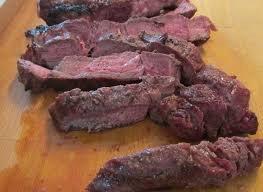
The Lakota on that last hunt in the Slim Buttes were so pleased with Buffalo meat, that they still took delight in it—even after 8 or more weeks of eating only buffalo meat—after all other food, coffee and tobacco was gone. Photo NBA.
Fires crackled, pots boiled. People ate the tasty buffalo meat with great relish. All were smiling and happy.
In fact they were so happy with the hunt and the meat that they stayed in the Slim Buttes hunting area in tepees and tents for 3 months—even though they had packed only enough provisions for 3 weeks and soon ran out of all other food.
From then on they had only fresh buffalo meat to eat—no vegetables, no tobacco, no coffee or tea, except what they made with rose hips.
But still they stayed—even through the coldest blizzards and deepest snow they had ever known—until they had all the buffalo meat and hides they could carry home again.
“Eat the meat of the buffalo. It’s healing. It keeps our people strong. It fills the soul as well as the body,” say Native Elders today.
Health-conscious people across the US and Canada have discovered the benefits of Bison meat today. They call it nutritious, hearty, sweet and rich, tasty and tender and nearly fat-free.
Speaking for myself, some of the best meat I ever tasted was at the 3-Day National Bison Association Summer Convention held in North Dakota in 2019.
We ate buffalo meat every day. Tender and tasty! Perfectly seasoned!
Much of the meat was donated by local producers as I remember—so they probably made sure it came from the best bison cuts, from bison of just the right age. No tough old bulls.
The Great American Buffalo Cookbook
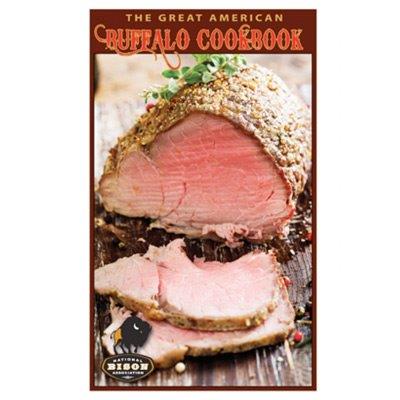
Front Cover of the Great American Buffalo Cookbook, available from NBA for only $3. Photo NBA.
The National Bison Association compiled and published a 22-page gem called “The Great American Buffalo Cookbook” in 2002. It’s organized for all cooks, those just getting started with cooking Bison as well as seasoned cooks.
Includes lots of good cooking tips, clearly explained. Everything you need for cooking delicious Buffalo Meals—and all for only $3.00.
You can order The Great American Buffalo Cookbook here: National Bison Assoc, 8690 Wolff Court, #200; Westminster CO 80031, or by visiting the website www.bisoncentral.com (Note: even more recipes are available on the NBA website.)
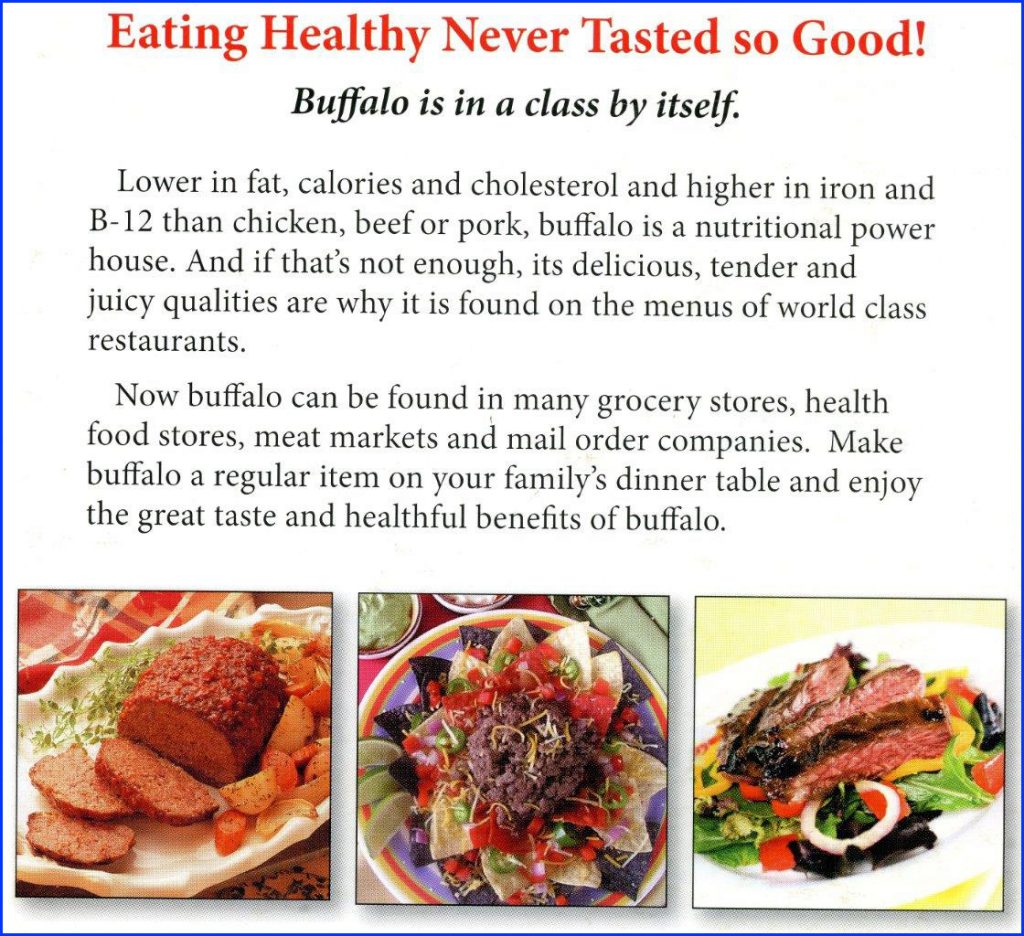
Back cover of the Great American Buffalo Cookbook. A gem of a book published by the National Bison Association in 2002. Photo courtesy of NBA.
This cookbook is only 22 pages, but includes lots of good cooking tips, clearly explained.
(Note: Except for front and back covers, shown above, the colored food photos that illustrate this article are not included in the NBA Cookbook.)
Grilling Buffalo Steaks
Lots of “Hints” and “Tips” are included. The NBA Cookbook starts right out with the basics of grilling a Buffalo Steak.
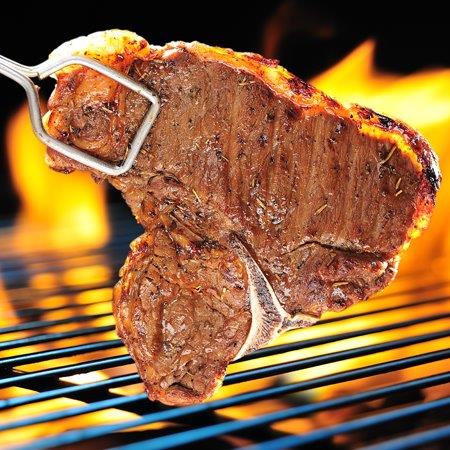
Cooking hint–Sear both sides of steak on hot grill to keep the juices in the steak, then turn heat down and finish cooking to desired doneness. Photo NBA.
Grilling Buffalo Steaks
Cooking time is important in order not to overcook your steaks. Total cooking time will depend on the thickness of the steaks.
1 inch thick Rare: 6-8 minutes Medium: 10-12 minutes
1 ½ inch thick Rare: 10-12 min Medium: 14-18 min
2 inch thick Rare: 14-20 min Medium: 20-25 min
Steaks recommended for grilling/barbecuing include Rib Eye, T-bones, New York Strip, Flat Iron, Flank and Sirloin.
Less tender cuts of buffalo steaks are not recommended for grilling unless they have been marinated.
Steaks thinner than ¾ inches thick are not recommended for barbecuing or broiling. (Note: Well-done buffalo steaks are not recommended. Due to the leanness of the meat, buffalo has a tendency to become dry when overcooked.)
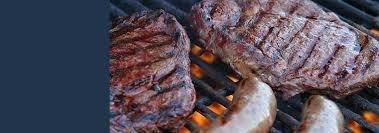
Buffalo meat, always delicious from the grill, whether steak or sausages. Cooking buffalo to well-done is not recommended, however, due to the leanness of the meat. Photo Buffalo Hills Bison.
Broiled Buffalo Steak
Rub your favorite cut of steak with a combination of a little garlic salt, cooking oil, ground black pepper and lemon juice. The lemon makes it tangy, with a zippy flavor.
Rosemary Marinated Steak
1 sirloin buffalo steak
1 Tbs. dried rosemary
½ cup red wine
¼ cup olive oil
Hints
- For good cooking, preheat broiler or grill at least 5 min. before you broil or grill a steak.
- Use long handled tongs to turn steaks on the grill. A fork will pierce the meat and allow the flavorful juices to escape.
- Sear both sides of your steak on hot grill to keep the juices in the steak, then turn heat down and finish cooking to desired doneness.
- When cutting thin slices of meat, have the whole piece slightly frozen. It will slice easier.
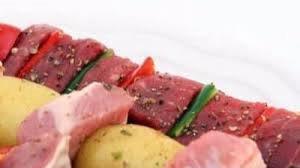
Kabobs made with cubes of Bison steak. Some veggies may be pre-cooked. Photo Quill Creek Farms.
The cookbook is divided into 4 sections, with 6 to 10 recipes in each:
1. Steak and recipes using meat chunks, cubes or slices. Includes Buffalo Fajitas, Pita Pockets, Kabobs, Stew and Stir-Fry.
2. Buffalo Roast and Leftovers, includes Bar-B-que Buffalo, Crock Pot, Buffritos, Sandwich Filling.
3. Ground Buffalo and Buff A Loaf, Buff-N-Biscuit, Chicken-Fried Steak, Meatballs, Lasagna, Cheeseburger Pie, Buffalo Quiche and Chili.
4. Miscellaneous (Buffalo salami, tongue, heart, more).
Further it is noted that Buffalo may be used with any of your favorite beef recipes if you remember these basic tips.
Buffalo Cooking Tips
Buffalo meat is similar to beef and is cooked in much the same way. The taste is often indistinguishable from beef, although buffalo tends to have a fuller, richer (and sweeter) flavor. It is not “gamy’ or wild tasting. Buffalo is low in fat and cholesterol, and is high in protein, vitamins and minerals. Fresh cut buffalo meat tends to be darker red and richer in color than many of the other red meats.
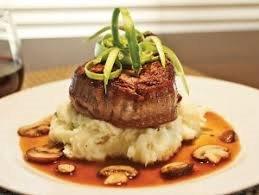
Filet Mignon are prime cuts of the best Bison meat. NBA
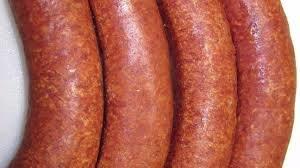
Less tender cuts and odds and ends can be easily turned into delicious sausages in casings with the right equipment. Photo Quill Creek Farm.
The lack of fat ensures that buffalo meat will cook faster. Fat acts as an insulator—heat must first penetrate this insulation before the cooking process begins. Marbling (fat within the muscle) aids in slowing down the cooking process. Since buffalo meat lacks marbling, the meat has a tendency to cook more rapidly. Caution must be taken to ensure that you do not overcook buffalo.
- When oven broiling buffalo, move your broiler rack away from the heat about a notch lower from where you normally broil your beef steaks. Check your steaks a few minutes sooner than you normally would.
- If you normally cook your roast beef at 325 F, turn your temperature down to around 275 F for buffalo. Plan on the roast being done in about the same amount of time as with a comparable sized beef roast. To ensure the temperature you prefer, we recommend using a meat thermometer indicating the internal temperature.
- Ground buffalo or Buffalo burger is also leaner (most ranging about 88-92% lean). It will also cook faster so precautions must be taken not to dry out the meat. There is very little (if any) shrinkage with buffalo burger—what you put in the pan raw will be close to the same amount after you cook it. Pre-formed patties tend to dry out faster when grilling. (Hint: the thicker the patty, the juicier the burger.) Although ground buffalo is leaner, there is no need to add fat to keep it from sticking to the pan or falling apart.
All meat, no matter the leanness has enough fat available to cook with it properly. The great thing about ground buffalo is you don’t need to drain off any grease from the pan!
Award Winning Bison Recipes from NBA
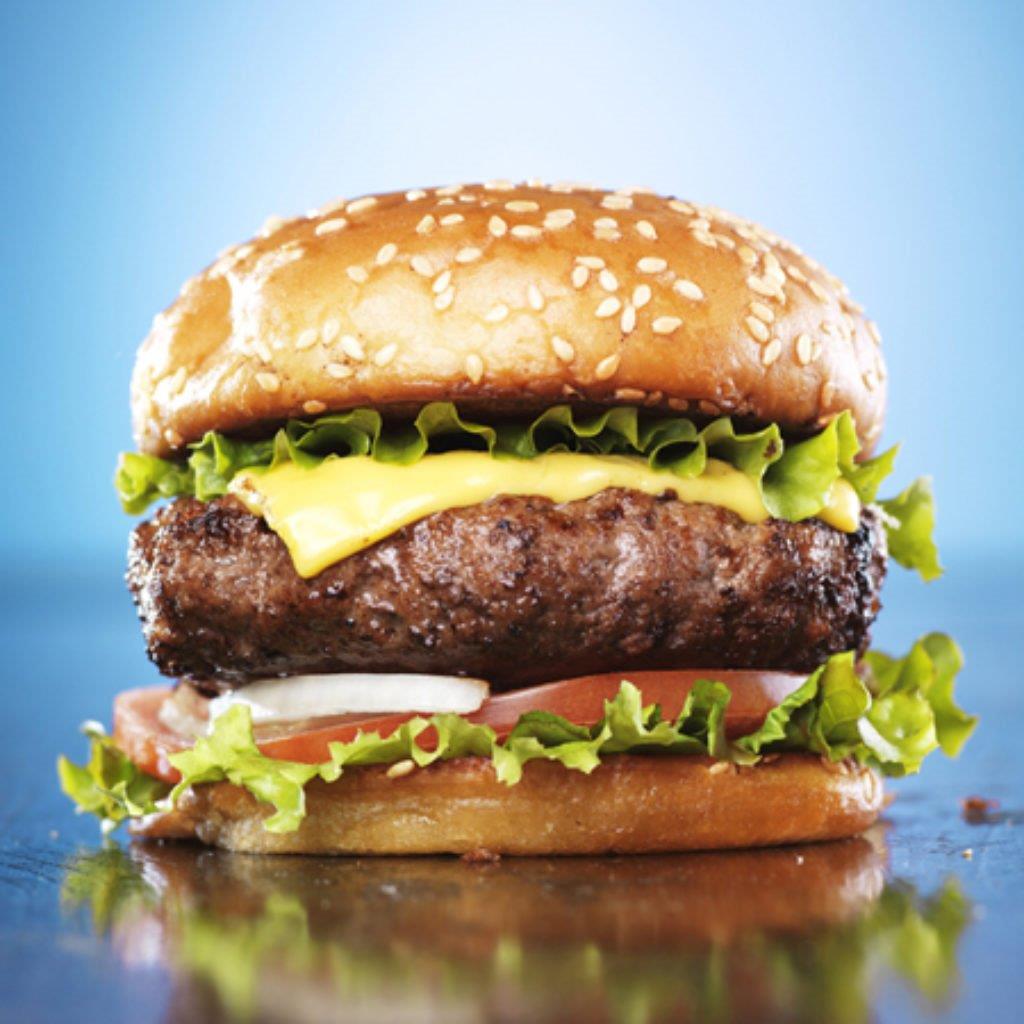
A deluxe burger with added tomato slice, onion and lettuce with maybe cheese and bacon enhances the plain burger, which can be a bit dry. Be careful not to overcook. NBA
Additional Bison recipes are available at www.bisoncentral.com
Here are some award winners selected by NBA and on their website.
This is an especially good one. For the dedicated chef, I think.
Irish Creek Ranch Best Slider, Winning “Best Bison Slider” Recipe from the NBA’s 2017 Winter Conference.
First Place Bison Burger Slider Recipe, by Karissa Dorey
Irish Creek Ranch Favorite Sliders.
Vermilion, Alberta Bison burgers are something that even the most unlearned, uncultured taste buds can enjoy. (For those of you who believe bison taste “gamey!”)
It is a sure staple on our ranch. Everyone loves it.
My husband every time repeatedly exclaims whilst sinking his teeth into this juicy burger, “This is amazing. People would pay a lot of money for this!”
Hands down this is the BEST burger ever. And maybe even the best BISON burger!
All this being said it is possible to totally screw up a bison burger.
So follow the instructions—especially the burger patty frying part and cover that frying pan!
Irish Creek Ranch Favorite Sliders
Makes: 8 -1/4 lb slider patties
Burger Patties:
2 lbs Ground Bison, thawed
Montreal Steak Seasoning
Worcestershire Sauce
3 Tablespoons Canola Oil
Whiskey Caramelized Onions:
2 Sweet onions
3 Tablespoons Olive oil
8 Brown mushrooms
2 Tablespoons Whiskey
8 slices of Gruyere cheese
8 slices of bacon
8 sourdough slider buns
4 handfuls of arugula
Truffle Aioli Sauce:
3 cloves garlic, minced
1/2 lemon, juice
1 cup mayonnaise
3 Tablespoons Truffle oil
2 Tablespoons Dijon mustard
Instructions:
First prepare onions 1 hour in advance:
Cut onions thinly. Place in frying pan over med-high heat, cover and cook onions and oil till
translucent. Take lid off and cook on low for 1 1/2 hour—be sure there is a single layer of onions on bottom of pan. Periodically stir to prevent burning. In the last 15 mins add mushrooms. Let cook. Then in the last 5 mins add whiskey.
Truffle Aioli Sauce:
Stir together all ingredients. Set aside
Bacon:
Cook bacon in advance for about 30 mins in the oven at 375 F. (Cook in a pan with sides lined with parchment paper.)
Burger patties:
Form 8 equal patties. Do not over handle. Sprinkle seasoning and Worcestershire sauce over each burger. Brush canola oil over each burger. Over high heat, heat remaining oil in a large frying pan. Once oil is hot (500 F) place burgers oil side and seasoning side down. Cover pan and cook for 4 mins. Flip and cook for additional 3 mins or until burger patties reach 140 F.
Let sit for 5 to 10 min before serving. Place caramelized onions/mushrooms and then bacon and then cheese over each burger. Cover and cook for additional 1-2 minutes or until cheese is melted.
Place on a freshly toasted bun smeared with Truffle Aioli sauce and arugula or lettuce. Stack from bottom to top: bottom bun, aioli sauce, lettuce, burger, onion/mushroom, cheese, bacon, aioli, top bun. Serve with fresh oven baked sweet potato fries and/or salad.
Karissa Dorey, Irish Creek Bison.
Other winners:
Canadian Prairie Bison Chili, Winner of “Best Bison Chili” Recipe from the NBA’s 2018 Winter Conference.
Colorful Bison Chili, Hawkeye Buffalo Ranch, Runner Up for “Best Bison Chili” Recipe from the NBA’s 2018 Winter Conference.
Sweet and Smoky Island Slider, Runner Up Slider Recipe from the “Best Bison Slider Recipe” Contest
Southwest Bison Pho, by Benjamin Lee Bison—2020 NBA Winter Conference Recipe Winner.
Truly Saskatchewan Bison Stew, Winner 2019 NBA Winter Conference Best Bison Stew.
Bison Blue Cheeseburger
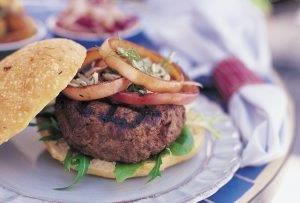
Bison Blue Cheeseburger is tasty with Blue Cheese. NBA.
_____________________________________________
Serves 6
Kathy Cary, Lilly’s, Louisville, Kentucky
Food Photography Jason McConathy
Recipe styling: Cook Street School of Fine Cooking—Denver, Co
______________________________________________________
INGREDIENTS
1 1/2 lbs. ground bison
1 Tbs. good quality Dijon mustard
2 Tbs. roasted & chopped shallots & garlic
1 tsp. Lea & Perrins Worcestershire sauce
Splash extra virgin olive oil
Kosher salt & fresh ground black pepper to taste
Good quality blue cheese or Roquefort
2 red onions sliced
Balsamic vinegar
2 bulbs fennel sliced
______________________________________________________
DIRECTIONS
Combine first 6 ingredients and form 6 patties, adding approximately 1 teaspoon of blue cheese into the center of each patty. Grill to order.
________________________________________________________
GARNISH
2 sliced red onions drizzled with extra virgin olive oil & balsamic vinegar.
Grill until tender.
2 bulbs of fennel, sliced & sautéed until tender.
Toss the onions & fennel together and place on bison burger
Serve with rosemary roasted potatoes and homemade coleslaw.
__________________________________________________________
Bison: High in Protien, Low Fat, Low Cholesterol
Research from Dr. Marty Marchello of our own North Dakota State University is included in the NBA Cookbook—so you can see how Bison compares nutritionally with beef and other meats. His USDA research was done at NDSU in 1996, updated in 2007 and 2013.
Below are Dr. Marchello’s nutritional comparisons for fat, protein, calories, cholesterol, iron and vitamin B-12 of 100 grams of cooked meat (a 3.5 oz serving) from Bison, Beef (both choice and select), Pork, Chicken and Sockeye Salmon.
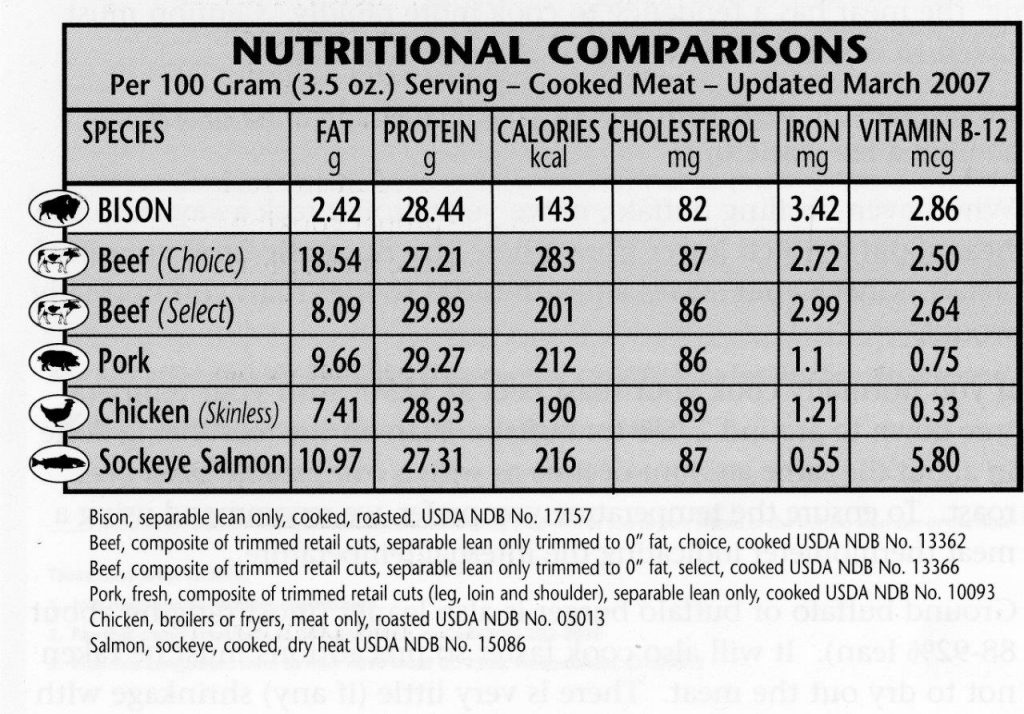
Dr. Marty Marchello’s nutrition chart compares the fat, protein, calories, cholesterol, iron and vitamin B-12 of 100 grams of cooked Bison meat (a 3.5 oz serving) to that of choice and select Beef, Pork, Chicken and Sockeye Salmon. NDSU.
At the August 2002 meeting of the Missouri Bison Association, Professor Barbara Lohse (Knouse), PHD, RD, LD, a Dietitian from Kansas State University spoke about the nutritional value of Bison meat.
Dr. Lohse, now Associate Professor and Principal Investigator at Pennsylvania State University, said there are many important advantages to bison meat in addition to the well-known “High in Protein, Low in Fat and Low in Cholesterol.”
This is especially important during this time when more people are pursuing healthier nutritional lifestyles, she said.
Dr. Lohse highlighted the following advantages of Bison nutrition:
- B6 and B12 (Bison is a HIGH source of these vitamins)
- Vitamin B12 is only available from animal sources
- Vitamin B12 has been shown to keep the elderly mentally alert
- Vitamin B6 is needed for protein metabolism
- Sodium (Bison is a LOW source of Sodium)
- High sodium intake is associated with hypertension
- Potassium (Bison is a HIGH source of Potassium)
- Key to lowering Blood Pressure
- Most foods high in potassium are also high in calories
- Bison contains 1/3 more potassium than chicken
- Iron (Bison is a HIGH source of available Iron)
- Necessary for hemoglobin formation and prevention of anemia.
- Bison is 3 times higher in Iron than pork or chicken.
- Selenium (Bison is a HIGH source of Selenium)
- An antioxidant shown to help prevent cancer.
- Bison has 4 times higher amount of Selenium than the USDA recommends as an antioxidant
- Conjugated Linoleic Acid (Bison is a high source of CLA)
- Antioxidant that has been shown to help prevent cancer
- Calories (Bison is a LOW source of calories) 1/2 the calories of pork and chicken
Ranch to Table: The buffalo meat market
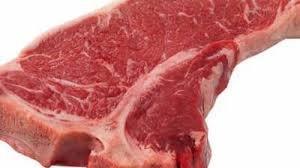
Many customers prefer to buy Bison meat from local producers directly or at Farmer’s Markets, enabling them to know just where their meat comes from. Photo Quill Creek Farms.
“Now buffalo can be found in many grocery stores, health food stores, meat markets and mail order companies. Make buffalo a regular item on your family’s dinner table and enjoy the great taste and healthful benefits of buffalo,” says the NBA website.
Also available on the NBA website is a list of producers who sell and ship Bison meat.
Beware of Water Buffalo Masking as American Bison
In her presentation Dr. Lohse emphasized the big differences between meat from American Bison (Bison) and Water Buffalo originating in Asia or Africa—recently being sold in the United States. Packages are often designed to resemble homegrown Bison.
In NUTRITION CHARTS she notes that American Bison meat is labeled “Bison,” not “Buffalo.” If you purchase meat labelled “Buffalo” it is probably imported water buffalo.
The NBA Cookbook, published earlier, doesn’t mention this. It can be a bit confusing because the Cookbook calls for “Buffalo” in its recipes. (Just remember Dr Lohse’s tip above when purchasing meat. Otherwise, we accept the terms as interchangeable.)
Don’t make the mistake of buying Buffalo meat unless it’s labelled “Bison.”
Note that buffalo today are butchered young—at 2-3 years of age—while they are tender and tasty. In addition buyers often have the choice whether to buy grass-fed or grain finished bison meat—which is a bit higher in fat, preferred by some. Many other health-conscious customers prefer and enjoy grass-fed bison meat.
It’s not like old days when the big old bulls were easiest to shoot, running on the outside of a stampeding herd to protect the more tender and tasty young bulls and cows running farther inside.
Native American hunters knew this and found a way to get past the old bulls, to the more tender and well-flavored young bulls and cows. In our histories they often told of how they’d shoot several bulls running on the outside of the herd to get past them and reach the more tender—and tasty—young bulls and cows being protected there.
Only if a hunter wanted a special trophy head, or huge tough hides for covering the tepee did he settle for older bulls. Likely, tenderness was less of a concern when their meat was dried for making jerky or pemmican.
Native Americans Love and revere the taste
Today, with their own tribal herds—no question, the opportunity to again eat buffalo meat is cherished by Native Americans.
They love and revere the taste of real Bison meat.
Tribes with buffalo herds use much of their own buffalo meat within the community.
Butchering and caring for the meat is regarded as an integral part of the circle of life, and as an important skill to teach children.
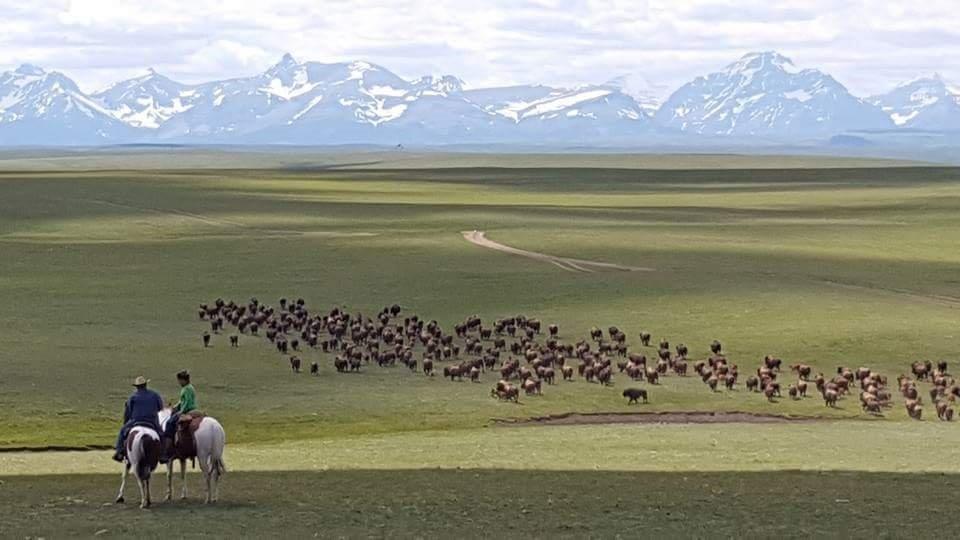
Today Indian tribes with their own herds use much of their buffalo meat within the community for special events and as an honored part of the healthy foods in diabetes programs. Because buffalo meat is low in fat and cholesterol and high in protein, highly absorbable iron and zinc, it is considered a healthy food. When grass fed it is even lower in fat and more nutrient-dense. Photo InterTribal Buffalo Council.
“We take our children to the kill,” explains LaDonna Allard, Tribal Historian for the Standing Rock Sioux Tribe.
“The process is carried out with due ceremony, with prayer and thanksgiving,” she says. “We thank the buffalo.”
A high-powered rifle takes down the animal, so it is killed instantly to alleviate suffering.
The carcass is then skinned and cut up in traditional ways, with all parts used in ceremonies—horns, skulls, bones and hides.
“Every part has meaning. We use them all,” Allard explains.
The Fort Peck tribes in Northeastern Montana have built their own butchering facility, out near the corrals, for tribal members who want to purchase and slaughter their own buffalo from the business herd of about 200 head.
Robert Magnan, Fort Peck Fish and Game Director, says he buys a buffalo himself each year and shares it with relatives, as do around three dozen other tribal members.
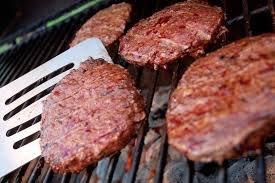
One of the easiest and most tasty ways to prepare Bison Burgers is on the grill. Photo by Nebraska Bison
“We have all the equipment—saws, grinder—and they bring their own wrap. We teach them how to cut up the different parts—roast, steaks. Grind the tougher cuts and scraps for hamburger. [We teach] how to cook them.”
But first, says Magnan, echoing what others explain, “We talk to the buffalo. Tell them we need meat to feed our families. Thank them for their willingness to take care of us.”
For meat used in the tribes’ federally subsidized programs the Ft Peck tribes haul live animals to the nearby small town of Scobey, where they are processed in a USDA meat inspected plant.
A buffalo carries less meat than a steer, he says, about 800 pounds on the carcass.
The Fort Peck tribes offer buffalo hunts, as many as 40 or 50 a year from their business herd.
In 2014 hunters paid the tribe $850 for a two-year-old bull, $1,200 for a dry cow, $1,500 for an ordinary bull, and up to $10,000 for a big bull with well-formed horns.
Many are return hunters who come from foreign countries—Korea and Germany—and Texas and other states throughout the US.
Magnan’s staff instructs hunters to wait until they can shoot an animal off by itself—one of the five or six in a pasture with blue ear tags, designated for paid hunting. They are told not to fire into the herd.
Magnan insists the selected buffalo needs to be put down quickly without suffering. He goes with the hunter and carries a rifle to finish the job himself if the paying hunter only wounds it.
In many tribes, anyone putting on a community feed can request buffalo meat.
Buffalo is served at graduations, namings and community celebrations, and has become an honored part of the healthy foods in diabetes programs.
Because buffalo meat is low in fat and cholesterol and high in protein, highly absorbable iron and zinc, and is considered delicious and exceptionally healthy, it is welcomed as a healthy food. When grass fed, it is even more nutrient-dense.
Diabetes is a serious concern in many Indian tribes.
Tribal leaders attribute their higher diabetes risk to genetics and reservation living, which often leads to a sedentary lifestyle and diet high in sugar and fat.
Today’s lifestyles are quite unlike the traditionally active lifestyles and lean, high protein diets of 100 years ago.
“Buffalo meat, grass fed meat—this is something people with diabetes can eat that is good for them,” Alvah Quinn explains in talks at schools.
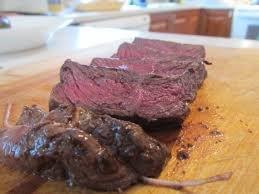
Buffalo meat is considered a healthy meat for people with diabetes. Photo North Fork Bison.
“We can offer 100 percent pure buffalo meat to our tribal members for nothing or almost nothing. With all the diabetes in Indian Country, eating right is important.”

Francie M Berg
Author of the Buffalo Tales &Trails blog


